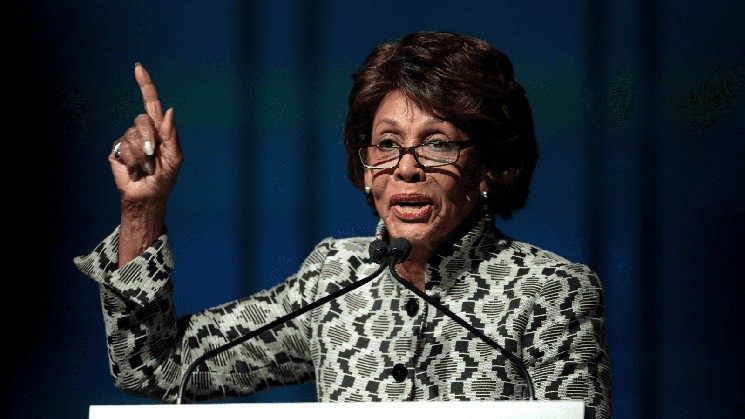Bipartisan Stablecoin Regulation Has a Slim Chance of Passing This Year

An eagerly awaited US bill that would regulate stablecoins has been delayed, giving the proposed legislation steep odds to become law this year, according to a source familiar with the matter.
The contents of the bill, which would be co-sponsored by House Financial Services Committee Chair Rep. Maxine Waters, D-Calif., and Rep. Patrick McHenry, R-N.C., have largely been kept confidential. But emerging details suggest a number of fundamental sticking points.
Washington insiders say there’s strong momentum to regulate stablecoins this year, following the collapse of Terra’s UST. US officials, including Treasury Secretary Janet Yellen, have urged financial regulators to treat stablecoin issuers akin to FDIC-insured banks, pointing to the potential for further fallout if no action is taken soon.
The outcome of Waters and McHenry’s bill, one source said, looks to be somewhere in the middle: There’s a general consensus that non-bank entities should be able to issue stablecoins, perhaps under the guidance of the Federal Reserve or a watchdog created for that purpose.
The bill’s timeline has faced repeated delays. The measure was originally slated to be introduced in the last week of July, but inter-partisan squabbling evidently scuttled its rollout.
Best case, the bill would be unveiled in August, with the “markup” stage — where politicians on the introducing committee weigh in, before sending the legislation to the floor — following in September. In any event, getting it through both houses of Congress before year-end is not likely.
Sources were granted anonymity to discuss non-public matters.
With the House out of session this week and uncertainty swirling around the November elections, it would be an uphill battle to get the bill finalized, the source said.
US regulators have been discussing reigning in the growing stablecoin industry for months. In the first of many expected digital asset reports following President Biden’s executive order, a group of regulators urged the government to work with other nations on crypto policy, specifically with regard to the cryptocurrencies designed to follow fiat currencies.
Stablecoins, such as Terra’s UST, are typically designed to trade on a one-to-one cadence with a fiat currency, such as the dollar or euro.
Industry participants largely agree that current market conditions do highlight a need for stronger regulatory guidelines — especially transparency of their underlying assets and auditing systems.
“If you just look at the events in April and May, basically the question everybody asked was ‘What are these stablecoins? Are they really stable? What is backing it?’” said Wolfgang Bardorf, senior vice president of Checkout.com. “If you look at a lot of the guidance that has come out, it has very much been going in that direction.”
Stablecoins have likewise been top of mind for regulators around the world.
The International Organization of Securities Commissions (IOSCO) and the Bank for International Settlements’ Committee on Payments and Market Infrastructures (CPMI) issued final guidance on stablecoin practices last month.






 Bitcoin
Bitcoin  Ethereum
Ethereum  Tether
Tether  USDC
USDC  TRON
TRON  Dogecoin
Dogecoin  Cardano
Cardano  Bitcoin Cash
Bitcoin Cash  Chainlink
Chainlink  LEO Token
LEO Token  Monero
Monero  Zcash
Zcash  Stellar
Stellar  Litecoin
Litecoin  Hedera
Hedera  Dai
Dai  Cronos
Cronos  OKB
OKB  Tether Gold
Tether Gold  Ethereum Classic
Ethereum Classic  KuCoin
KuCoin  Gate
Gate  Algorand
Algorand  Cosmos Hub
Cosmos Hub  VeChain
VeChain  Stacks
Stacks  Tezos
Tezos  Dash
Dash  TrueUSD
TrueUSD  IOTA
IOTA  Basic Attention
Basic Attention  Theta Network
Theta Network  Decred
Decred  NEO
NEO  Synthetix
Synthetix  Qtum
Qtum  Ravencoin
Ravencoin  0x Protocol
0x Protocol  DigiByte
DigiByte  Zilliqa
Zilliqa  Nano
Nano  Siacoin
Siacoin  Numeraire
Numeraire  Waves
Waves  Status
Status  Ontology
Ontology  Enjin Coin
Enjin Coin  BUSD
BUSD  Hive
Hive  Pax Dollar
Pax Dollar  Lisk
Lisk  Steem
Steem  Huobi
Huobi  NEM
NEM  OMG Network
OMG Network  Bitcoin Gold
Bitcoin Gold  Augur
Augur